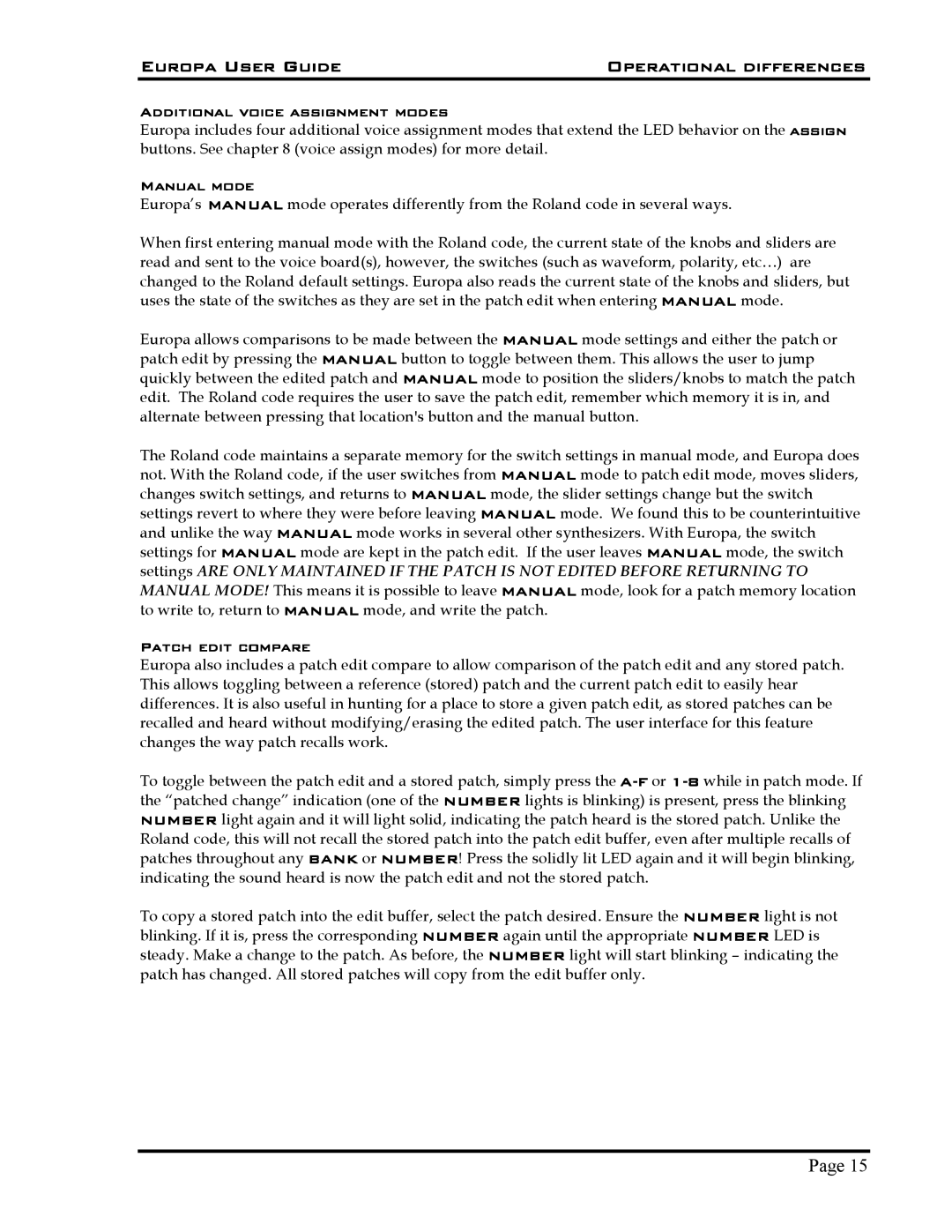Europa User Guide | Operational differences |
Additional voice assignment modes
Europa includes four additional voice assignment modes that extend the LED behavior on the assign buttons. See chapter 8 (voice assign modes) for more detail.
Manual mode
Europa’s MANUAL mode operates differently from the Roland code in several ways.
When first entering manual mode with the Roland code, the current state of the knobs and sliders are read and sent to the voice board(s), however, the switches (such as waveform, polarity, etc…) are changed to the Roland default settings. Europa also reads the current state of the knobs and sliders, but uses the state of the switches as they are set in the patch edit when entering MANUAL mode.
Europa allows comparisons to be made between the MANUAL mode settings and either the patch or patch edit by pressing the MANUAL button to toggle between them. This allows the user to jump quickly between the edited patch and MANUAL mode to position the sliders/knobs to match the patch edit. The Roland code requires the user to save the patch edit, remember which memory it is in, and alternate between pressing that location's button and the manual button.
The Roland code maintains a separate memory for the switch settings in manual mode, and Europa does not. With the Roland code, if the user switches from MANUAL mode to patch edit mode, moves sliders, changes switch settings, and returns to MANUAL mode, the slider settings change but the switch settings revert to where they were before leaving MANUAL mode. We found this to be counterintuitive and unlike the way MANUAL mode works in several other synthesizers. With Europa, the switch settings for MANUAL mode are kept in the patch edit. If the user leaves MANUAL mode, the switch settings ARE ONLY MAINTAINED IF THE PATCH IS NOT EDITED BEFORE RETURNING TO MANUAL MODE! This means it is possible to leave MANUAL mode, look for a patch memory location to write to, return to MANUAL mode, and write the patch.
Patch edit compare
Europa also includes a patch edit compare to allow comparison of the patch edit and any stored patch. This allows toggling between a reference (stored) patch and the current patch edit to easily hear differences. It is also useful in hunting for a place to store a given patch edit, as stored patches can be recalled and heard without modifying/erasing the edited patch. The user interface for this feature changes the way patch recalls work.
To toggle between the patch edit and a stored patch, simply press the
To copy a stored patch into the edit buffer, select the patch desired. Ensure the NUMBER light is not blinking. If it is, press the corresponding NUMBER again until the appropriate NUMBER LED is steady. Make a change to the patch. As before, the NUMBER light will start blinking – indicating the patch has changed. All stored patches will copy from the edit buffer only.
Page 15
